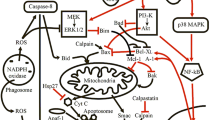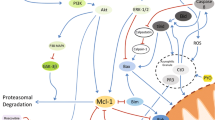Abstract
Human neutrophils constitutively undergo apoptosis, process which is critical for the successful resolution of inflammation by the safe removal of effete cells. A wide variety of agents can modulate neutrophil apoptosis and these act through multiple and complex receptor-signalling pathways. Whilst these pathways can be initiated via distinct cell surface receptors, many downstream intracellular pathways can converge, use common molecules or trigger similar cellular activities, such as activation of caspases and transcription factors. The cell surface receptors, TNFR and Fas both trigger apoptosis in certain cell types, including neutrophils. However, TNF receptors also activate survival mechanisms in human neutrophils. This review summarises current knowledge about the regulation of neutrophil apoptosis via death receptors, the molecular components involved in signalling and potential therapeutic targets that are based on death receptors or their signalling pathways.
Similar content being viewed by others
Author information
Authors and Affiliations
Corresponding author
Additional information
Received 21 March 2003; received after revision 2 May 2003; accepted 16 May 2003
Rights and permissions
About this article
Cite this article
Akgul, C., Edwards, S.W. Regulation of neutrophil apoptosis via death receptors. CMLS, Cell. Mol. Life Sci. 60, 2402–2408 (2003). https://doi.org/10.1007/s00018-003-3110-z
Issue Date:
DOI: https://doi.org/10.1007/s00018-003-3110-z




